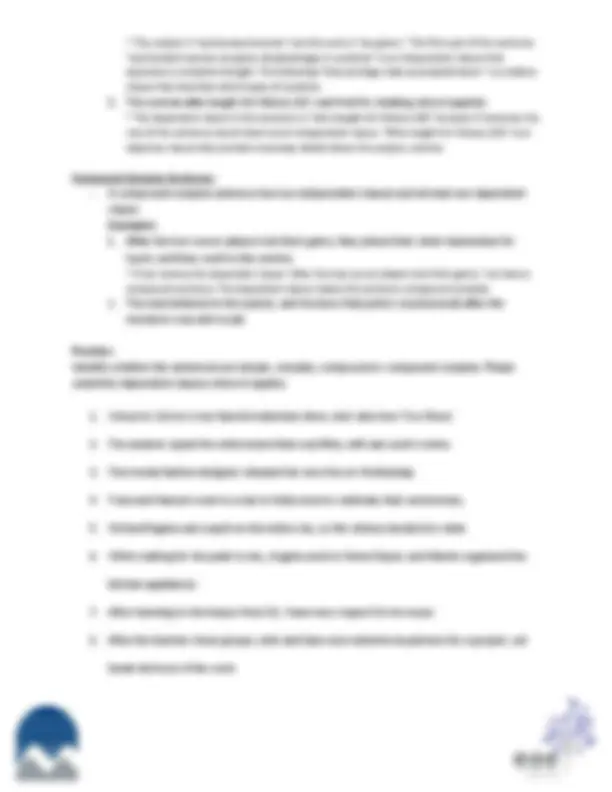



Study with the several resources on Docsity

Earn points by helping other students or get them with a premium plan


Prepare for your exams
Study with the several resources on Docsity

Earn points to download
Earn points by helping other students or get them with a premium plan
Community
Ask the community for help and clear up your study doubts
Discover the best universities in your country according to Docsity users
Free resources
Download our free guides on studying techniques, anxiety management strategies, and thesis advice from Docsity tutors
to learn sentences easy to get a better knowledge
Typology: Exams
1 / 2

This page cannot be seen from the preview
Don't miss anything!


Sentence Types: Simple, Compound, Complex, and Compound-Complex Simple Sentences
Compound Sentences
Complex Sentences
^ The subject is “opinionated women” and the verb is “are given.” The first part of the sentence “opinionated women are given disadvantages in societies” is an independent clause that expresses a complete thought. The following “that privilege male accomplishments” is a relative clause that describes which types of societies.
Compound-Complex Sentences
Practice: Identify whether the sentences are simple, complex, compound or compound-complex. Please underline dependent clauses where it applies.
kitchen appliances.
Sarah did most of the work.